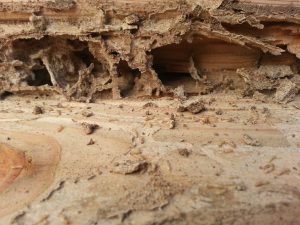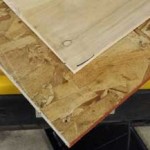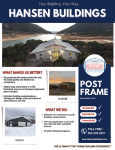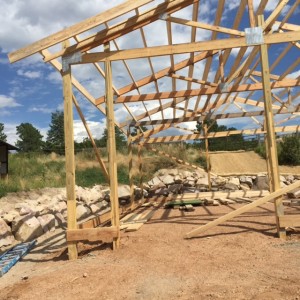This Wednesday the Pole Barn Guru answers reader questions about subterranean termites eating the posts, the best resource to acquire commodity items like OSB, and providing a kit sized 16′ x 32′ x 10 height.
DEAR POLE BARN GURU: What do you do about subterranean termites eating the posts.? Where I’m at they eat treated lumber. DAN in FRAZIER PARK
 DEAR DAN: Inorganic arsenic based pressure preservative treatments are toxic to any type of termite. Even so, a pre-construction termite treatment should be done (read more here: https://www.hansenpolebuildings.com/2019/09/pre-construction-termite-treatment/), as termites will build around poisonous wood in order to get to materials they may find as more pleasing to their palates. If you are seeing termites eating treated lumber, it is due to non-arsenic based treatments.
DEAR DAN: Inorganic arsenic based pressure preservative treatments are toxic to any type of termite. Even so, a pre-construction termite treatment should be done (read more here: https://www.hansenpolebuildings.com/2019/09/pre-construction-termite-treatment/), as termites will build around poisonous wood in order to get to materials they may find as more pleasing to their palates. If you are seeing termites eating treated lumber, it is due to non-arsenic based treatments.
 DEAR POLE BARN GURU: Are you able to supply the osb 7/16 sheathing boards the insulation foam boards and interior wall lumber boards to my order if I purchase the custom design package deal to up grade and custom my order. RAFAEL in ANTIOCH
DEAR POLE BARN GURU: Are you able to supply the osb 7/16 sheathing boards the insulation foam boards and interior wall lumber boards to my order if I purchase the custom design package deal to up grade and custom my order. RAFAEL in ANTIOCH
DEAR RAFAEL: Thank you for your continued interest in a new Hansen Pole Building. All of those items are considered ‘commodity’ items and while we can provide them, our clients typically have found it more practical to acquire them from vendors such as your nearby The Home Depot.
 DEAR POLE BARN GURU: Could you provide a kit 16′ x 32′ x 10 height? ROBERT in GASTONIA
DEAR POLE BARN GURU: Could you provide a kit 16′ x 32′ x 10 height? ROBERT in GASTONIA
DEAR ROBERT: We can provide any dimensions up to 100 foot clearspan width, lengths only limited by your property and heights up to 40 foot sidewalls or three stories (50 foot sidewalls and four stories with fire suppression sprinklers). Depending upon how you will be using your new building, multiples of six feet in width and 12 feet in length are usually your most cost effective.
 DEAR POLE BARN GURU: If you put couple of the laminated post too deep on an end wall can they be added upon to make them work and still be strong enough? A stupid rookie mistake on me. ALAN in KELSO
DEAR POLE BARN GURU: If you put couple of the laminated post too deep on an end wall can they be added upon to make them work and still be strong enough? A stupid rookie mistake on me. ALAN in KELSO  DEAR POLE BARN GURU: I am building a post frame pole barn with half walls to store an RV. I am planning on using 6×6 UC4B (CCA) posts suspended in a concrete footing/collar. They bottoms of the posts (gravel floor) will be exposed to weather (North Alabama) during blowing rain. My question is would a post protector or post sleeve be necessary or beneficial to protect against rot? And if so would a post protector need a weep hole with washed stone in this scenario? BENJAMIN in CHEROKEE
DEAR POLE BARN GURU: I am building a post frame pole barn with half walls to store an RV. I am planning on using 6×6 UC4B (CCA) posts suspended in a concrete footing/collar. They bottoms of the posts (gravel floor) will be exposed to weather (North Alabama) during blowing rain. My question is would a post protector or post sleeve be necessary or beneficial to protect against rot? And if so would a post protector need a weep hole with washed stone in this scenario? BENJAMIN in CHEROKEE 





